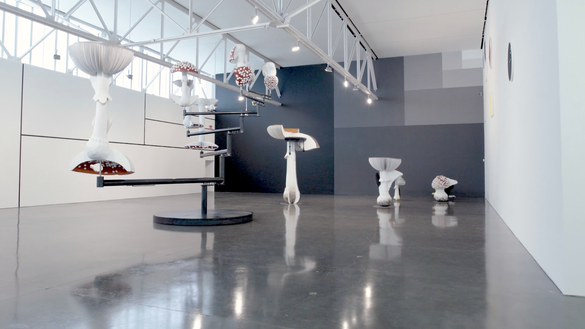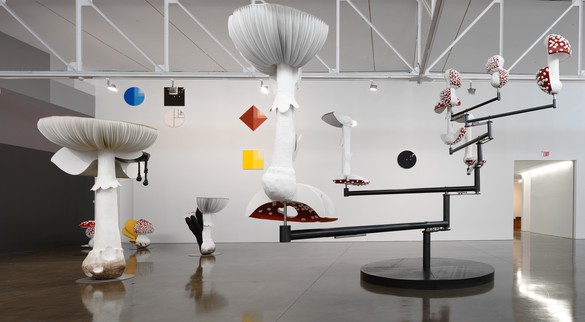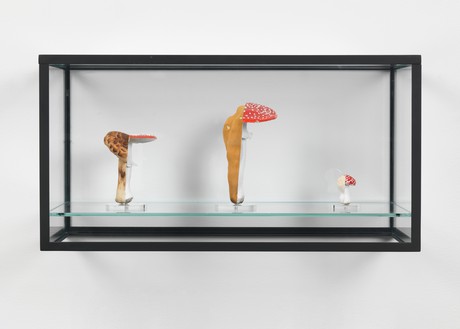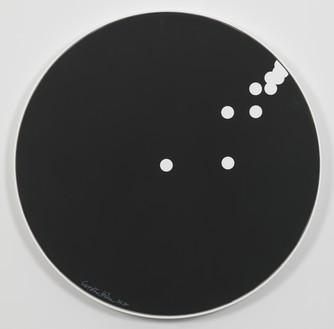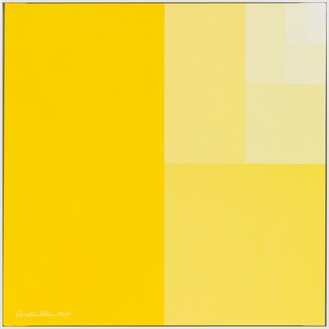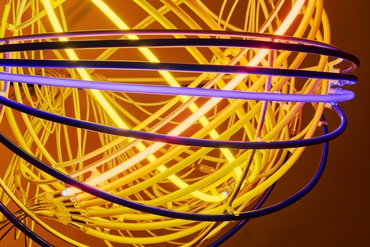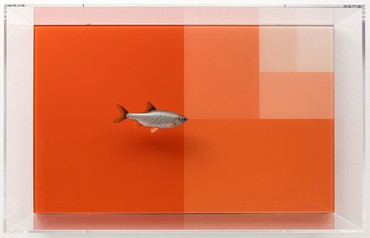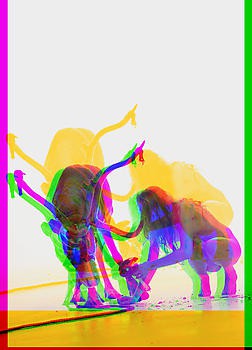Extended through September 1, 2017
About
I start with a formula to get a process going, then the formula takes over and continues into infinity on its own. It is not about creative decisions anymore; there is no choice, only reason.
—Carsten Höller
Gagosian is pleased to present REASON, an exhibition of recent work by Carsten Höller, his first in New York since Experience at the New Museum in 2011.
Giant mushrooms, mirrored revolving doors, abstract paintings, hyperreal little fish, play structures for children in the form of huge dice: Höller unites art, play, and phenomenology to transform the gallery into a laboratory that is equally rational and incomprehensible. Trained in the natural sciences, he has long been fascinated by the methods through which we seek to understand the world, studying the unique attributes and behaviors of humans, fungi, insects, and animals by imposing standardized systems of logic on them. Revolving Doors (2004/16), constructed according to triadic division, engulfs the viewer in a mise en abyme of ever-changing, turning reflections. Beyond this, the overall scheme for the two galleries is predicated on binary, asymptotic division, with color gradations, light intensity, and the placement of the works themselves following a pattern of diminishing halves. The Divisions paintings, as well as the murals that fully cover two adjacent walls of the gallery, follow this same logic. Divisions (Rose-grain Aphid and Surface) (2017) provides the geometric structure with a biological equivalent, revealing the parthenogenesis of a female rose aphid against a red background. The aphid produces offspring autonomously through division, while the vivid red sections become smaller and less intense, moving from left to right.
The Giant Triple Mushroom (2014–15) sculptures—an organic corollary to the planar environment of the Revolving Doors—combine enlarged cross-sections of three different fungal species, hybrids that seem at once empirical and surreal. Fly agaric mushrooms always make up at least half of these sculptures, with two other species attached in quarters; like many of Höller’s subjects, they are both formally and conceptually captivating, as incarnations of “irrationality with a method.” When ingested, fly agaric mushrooms can induce hallucinogenic effects—as seen in Muscimol 3. Versuch (1997), an early video that Höller made while under the influence. Flying Mushrooms (2015) is a giant stabile with moving parts, which turns when its lowest arm is pushed, causing a crop of seven fly agaric replicas to orbit slowly through the air, exemplifying their name. Each mushroom is cut vertically down the middle, then reassembled so that one half is upright and the other upended, the distinctive white-spotted red caps spinning like propellers at either end of their stems. Eliminating subjectivity, Höller instead allows divisional formulae to determine each composition. He searches for reason only to escape or disprove it, providing a model for infinity through dispassionate yet exquisite symmetry.
#HollerREASON
Artist
Download
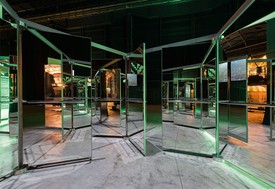
Carsten Höller
Daniel Birnbaum speaks with the artist about the “unsaturated” in his work.
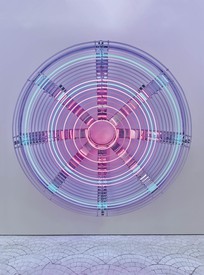
Around and Around and Around: Federico Campagna and Carsten Höller
Philosopher Federico Campagna and artist Carsten Höller came together, on the heels of Höller’s exhibition Clocks in Paris, to consider the measurement of time, the problem with fun, and the fine line between mysticism and nihilism.
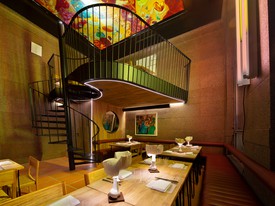
Brutalisten: An Interview with Carsten Höller
This spring, Carsten Höller launched Brutalisten, a new restaurant concept in Stockholm and the latest embodiment of his long-term culinary and artistic project called the Brutalist Kitchen. The twenty-eight-seat restaurant features a menu overseen by chef Stefan Eriksson that adheres to three classifications: “semi-brutalist” dishes (using oil or minimal ingredients), “brutalist” dishes (using salt and water), and “orthodox-brutalist” dishes (no additional ingredients). For the Quarterly, Höller speaks with Gagosian directors Serena Cattaneo Adorno and Mark Francis about this terminology, the importance of experimentation, and the fortuitous side effects of brutalist cuisine.

Carsten Höller’s ArcelorMittal Orbit Slide
Carsten Höller talks with Derek Blasberg about his lifelong obsession with slides, the reactions that he intends from his creations, and the concept of fun.
